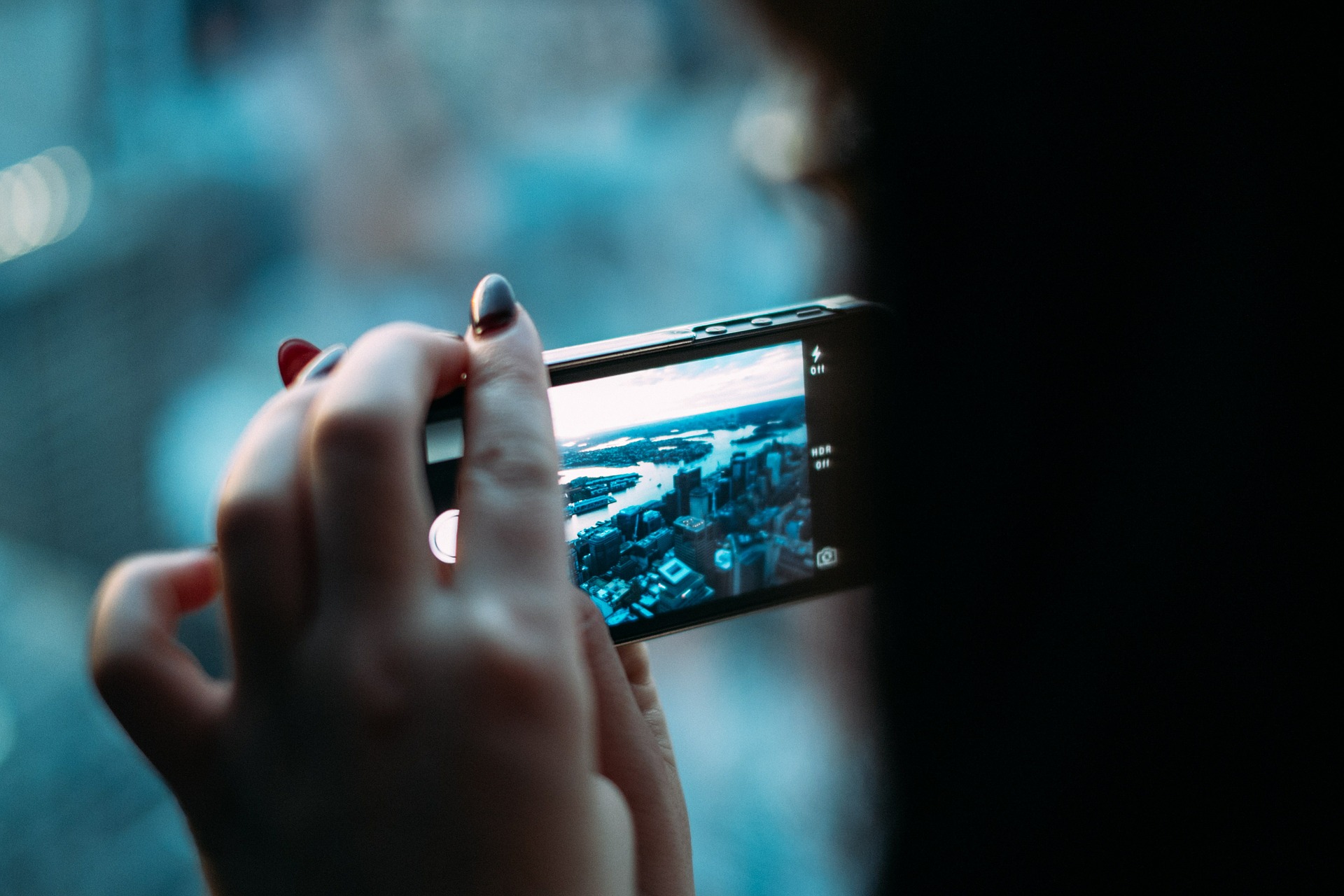Today’s smartphones are capable of producing amazingly good videos with the simple touch of a button. But if you want to take your smartphone-shot videos from good to great, you still need a little basic know-how. If you’re aiming to create professional-level video, whether you want high-quality clips for your blog or just a clear and crisp souvenir of your last holiday, keeping the following technique tips in mind the next time you hit record will help make your video the best it can be.
Shoot horizontal, not vertical.
 One of the most important things you need to remember when shooting video on a smartphone is never to record while holding your phone upright in the “portrait” orientation. You won’t notice any issues while recording or watching the video on the phone itself because of the screen’s vertical orientation, but virtually all other displays are landscape-oriented. This means that when a portrait-shot video is played on a computer desktop or a widescreen television, or any other device with a horizontal screen, two black bars will appear on either side of the video, making it look cramped and amateurish. If you forget this tip and accidentally record vertical footage, there are apps you can use to cure so-called “vertical video syndrome,” but it’s much easier to just turn your smartphone on its side before you start shooting.
One of the most important things you need to remember when shooting video on a smartphone is never to record while holding your phone upright in the “portrait” orientation. You won’t notice any issues while recording or watching the video on the phone itself because of the screen’s vertical orientation, but virtually all other displays are landscape-oriented. This means that when a portrait-shot video is played on a computer desktop or a widescreen television, or any other device with a horizontal screen, two black bars will appear on either side of the video, making it look cramped and amateurish. If you forget this tip and accidentally record vertical footage, there are apps you can use to cure so-called “vertical video syndrome,” but it’s much easier to just turn your smartphone on its side before you start shooting.
Stay steady.
Help keep your footage smooth and crisp by holding your smartphone as steady as possible while shooting. Though you might be tempted to extend your arms away from your body for a clearer view of the screen, you’ll actually get much better results if you make yourself into a human tripod by keeping your elbows sharply bent and tucked firmly into your sides. This position won’t completely eliminate shakiness, but it will minimize the effect of any sudden jolts or involuntary movements. It can also help if you want to create a smooth pan or a tracking shot; rather than moving just the camera with your arms, keep your feet planted and steadily rotate your whole upper body.
Of course, if you want to have completely stable footage, it’s best to use a tripod. Many lightweight and collapsible tripods, stabilizers, and camera cages are available for a wide range of smartphones.
Work with classic rules of framing and composition.
 The same rules that help you to take great photos with your smartphone will also help you produce great video footage. The “rule of thirds” is one of the most common composition tools: imagine that your image is divided by lines into horizontal and vertical thirds, like a tic-tac-toe board, and place your main subject at one of the points where two of these lines intersect rather than directly in the center. The eye is naturally drawn to these intersection points, and bringing in some asymmetry like this helps make your shot more dynamic and visually interesting. If you need help visualizing these lines and intersection points, some smartphones allow you to activate a grid that will appear on the screen while you’re shooting.
The same rules that help you to take great photos with your smartphone will also help you produce great video footage. The “rule of thirds” is one of the most common composition tools: imagine that your image is divided by lines into horizontal and vertical thirds, like a tic-tac-toe board, and place your main subject at one of the points where two of these lines intersect rather than directly in the center. The eye is naturally drawn to these intersection points, and bringing in some asymmetry like this helps make your shot more dynamic and visually interesting. If you need help visualizing these lines and intersection points, some smartphones allow you to activate a grid that will appear on the screen while you’re shooting.
Be aware of lighting.
Good lighting, whether natural daylight or artificial interior light, has the most immediately noticeable impact on the quality of a smartphone video. Before you begin shooting, check out the lighting in your environment and figure out how to make it work to your advantage. If you are outdoors, for example, make sure the sun is evenly lighting the scene and your subject; adjust your own position and the camera angle as needed to avoid any parts of the shot being too bright or too dark. Whether indoors or outdoors, avoid shooting your subject with their back to a light source, such as the sun or a window; you may be able to make out their features, but your smartphone camera will just see a silhouette.
Don’t forget audio.
If you want to capture audio alongside your video, it’s important to get as close to your subject as possible, even if you’re using an external microphone. The farther away you are, the less clear any recorded audio will be. You’ll also want to pay special attention to ambient noise; we’re used to ignoring sounds like wind or an airplane passing overhead when they’re part of the environment around us, but they can seem incredibly loud when replayed in a video.
Don’t be afraid to edit.
Even good-quality raw footage can benefit from some editing attention before being posted to social media or shared with your friends on your home television. Some basic edits, like trimming the beginning or end of your clip, can be done on your phone, but you may prefer to upload your video to your computer and take advantage of the many free video editing software options available to make more sophisticated tweaks. Just make sure to keep the original file intact; it’s always important to keep your raw footage in case you need to make any other alterations later on.

